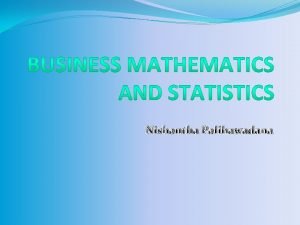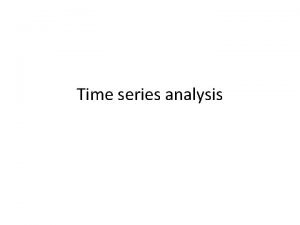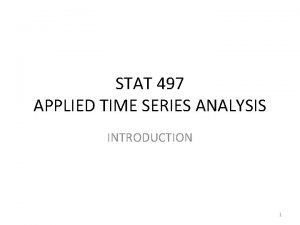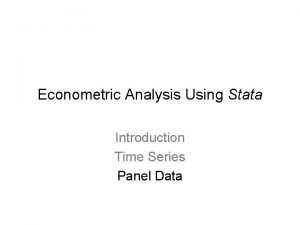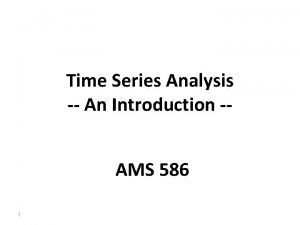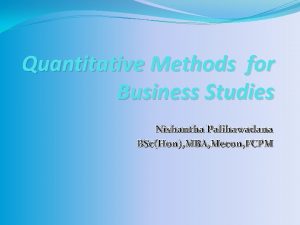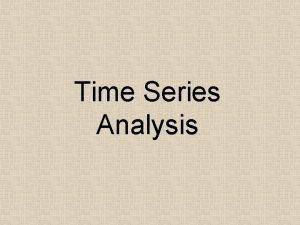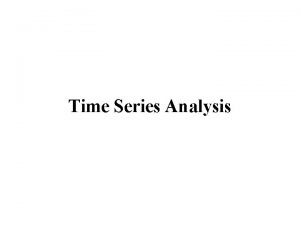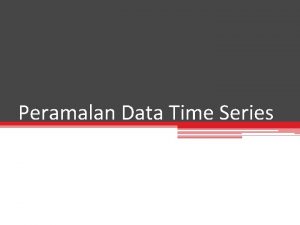Nishantha Palihawadana Time Series Analysis Definition of Time









- Slides: 9

Nishantha Palihawadana

Time Series Analysis Definition of Time Series: An ordered sequence of values of a variable at equally spaced time intervals. The variable shall be time dependent.

Applications: The usage of time series models is twofold: Obtain an understanding of the underlying forces and structure that produced the observed data Fit a model and proceed to forecasting, monitoring or even feedback and feed forward control.

Applications of the Time Series Analysis �Economic Forecasting �Sales Forecasting �Budgetary Analysis �Stock Market Analysis �Yield Projections �Process and Quality Control �Inventory Studies �Workload Projections �Utility Studies �Census Analysis

Composition �Time series data can be separated into 4 components. v Seculars or Long term Treand (T) v Cyclical fluctuation (C) v Seasonal Variations (S) v Random, Irregular variation (I)

Time series Models �Additive Model �Y=T+C+S+I �Multiplicative Model �Y=Tx. Cx. Sx. I

Calculation of Trend 1. Regression Line Yt=b 0+b 1 X 2. Method of Moving average 3. Exponential Smoothing Ft = Ft-1 + a(At-1 - Ft-1 ) where: At-1 is the actual value Ft is the forecasted value a is the weighting factor, which ranges from 0 to 1 t is the current time period.

Ex. . The following table represents the annual sales of a firm which started its operations in 1995. Year (X) 199 5 199 6 1997 1998 1999 2000 2001 200 2 2003 2004 2005 Sales (Y) in Rs. Mn 0. 2 0. 4 0. 5 1. 1 1. 7 1. 9 2. 3 1. 9 1. 3 � The firm has estimated the regression function on its sales as, � Y = 0. 22 + 0. 19 X � You are required to: � (a) Forecast the firm’s annual sales for the year 2010. � (b) Determine the forecasted annual sales for the years 2001 to 2006 using the method of � exponential smoothing, considering the actual annual sales in 1999 being Rs. 1. 1 Mn. � as the forecasted value of 2000. (Apply a smoothing constant of α =0. 2)

�Statistics to Business and Economics by J I T S Chandan
